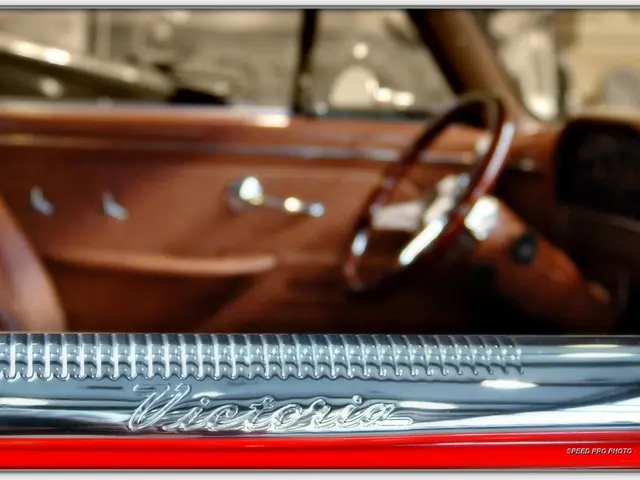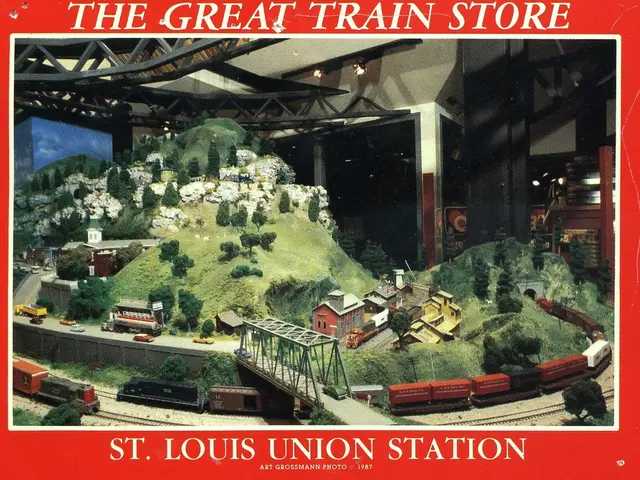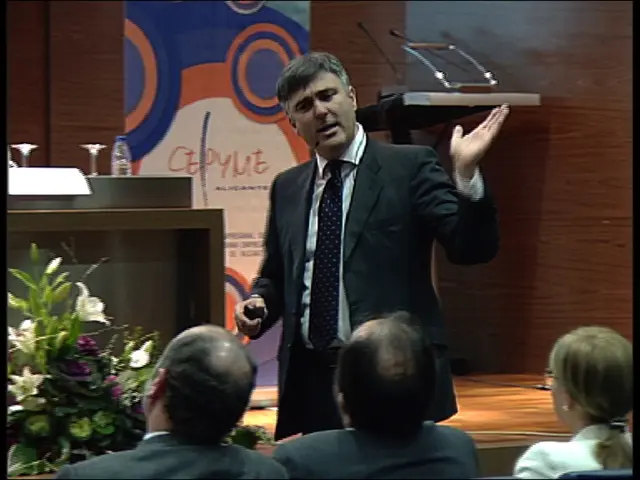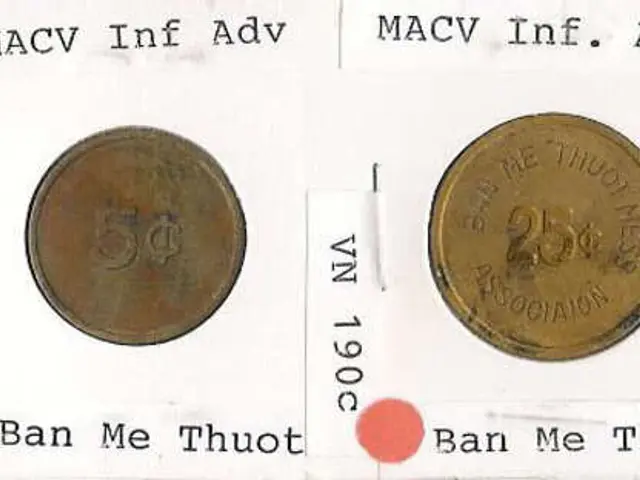Faster journeys and increased seating on NextGen Acela trains, yet the future of US rail remains questionable
Amtrak's NextGen Acela on the Verge of Debut: A Journey Through America's High-Speed Rail History
After years of delays and setbacks, Amtrak's NextGen Acela is scheduled to hit the rails on Aug. 28, 2025. This new high-speed train, manufactured by the French company Alstom, marks a significant milestone in America's love-hate relationship with fast trains.
The story of America's high-speed rail begins in October 1964, when Japan opened its Shinkansen high-speed line. Since then, the country has been a trailblazer in high-speed rail technology, while America has faced numerous challenges.
In May 2025, Amtrak cut 450 employee positions, a stark contrast to the success of the Acela Express, launched by Amtrak in 2000. Derived from France's TGV design, the Acela Express carried passengers at speeds up to 150 mph on the Northeast Corridor and became one of Amtrak's most popular and lucrative trains, attracting business travelers off regional airlines.
However, the Acela Express was not without its issues. It suffered from design problems and mechanical faults, including cracked yaw dampers and brake discs. Despite these issues, riders loved these high-speed trains.
The development of the NextGen Acela was affected by mechanical defects and failed simulation tests mandated by the Federal Railroad Administration. These issues led to a series of delays, but the organization responsible for manufacturing the NextGen Acela remained committed to delivering a superior product.
The unveiling of the NextGen Acela took place at Philadelphia's 30th Street Station rail yard, where a new maintenance shop is being constructed to service NextGen trains. This marks a significant step forward in cementing Philly's role in the railroad's addition of a million annual seats to its non-Acela corridor trains.
The NextGen Acela's lightweight design means faster acceleration and lower energy consumption. Each NextGen train can seat 82 more passengers than its predecessor, increasing Acela service capacity by 4,728 seats when the full fleet of 28 NextGens enters service.
The NextGen Acela's enhanced dynamic tilting system allows carriages to lean into curves on the corridor's twisting track, reducing speed loss. This feature, combined with its faster speed, positions the NextGen Acela as the fastest passenger service in American history.
However, the NextGen Acela falls short of global speed benchmarks set by China's Fuxing (217 mph) and Japan's newest Shinkansens (200 mph). This launch comes at a time of diminished political will for passenger rail in the US.
The High-Speed Ground Transportation Act of 1965 prioritized the development of trains over the reconstruction of tracks, power systems, and maintenance facilities in America. This decision, coupled with a series of political changes, has led to the underperformance of high-speed rail services in the US.
Despite these challenges, the NextGen Acela represents a step forward in America's high-speed rail journey. As it prepares to hit the rails, it carries the hopes and expectations of those who believe in the potential of high-speed rail to revolutionize transportation in America.
Read also:
- Peptide YY (PYY): Exploring its Role in Appetite Suppression, Intestinal Health, and Cognitive Links
- Toddler Health: Rotavirus Signs, Origins, and Potential Complications
- Digestive issues and heart discomfort: Root causes and associated health conditions
- House Infernos: Deadly Hazards Surpassing the Flames








